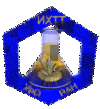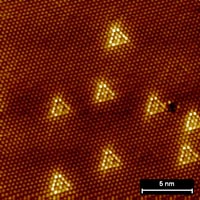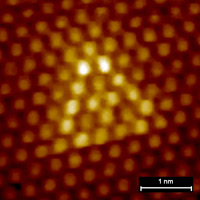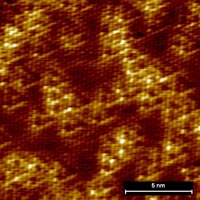Dmitry Yu. Usachov, Alexander V. Fedorov, Oleg Yu. Vilkov, Anatoly E. Petukhov, Artem G. Eybkin, Arthur Ernst, Mikhail M. Otrokov, Evgueni V. Chulkov, Ilya I. Ogorodnikov, Mikhail V. Kuznetsov, Lada V. Yashina, Elmar Yu. Kataev, Anna V. Erofeevskaya, Vladimir Yu. Voroshnin, Vera K. Adamchuk, Clemens Laubschat, and Denis V. Vyalikh
Nano Lett., V. 16, P. 4535.
DOI
ABSTRACT. The implementation of future graphene-based electronics is essentially restricted by the absence of a band gap in the electronic structure of graphene. Options of how to create a band gap in a reproducible and processing compatible manner are very limited at the moment. A promising approach for the graphene band gap engineering is to introduce a large-scale sublattice asymmetry. Using photoelectron diffraction and spectroscopy we have demonstrated a selective incorporation of boron impurities into only one of the two graphene sublattices. We have shown that in the well-oriented graphene on the Co(0001) surface the carbon atoms occupy two nonequivalent positions with respect to the Co lattice, namely top and hollow sites. Boron impurities embedded into the graphene lattice preferably occupy the hollow sites due to a site-specific interaction with the Co pattern. Our theoretical calculations predict that such boron-doped graphene possesses a band gap that can be precisely controlled by the dopant concentration. B-graphene with doping asymmetry is, thus, a novel material, which is worth considering as a good candidate for electronic applications.
Impact factor 13.592



.jpg)
.jpg)

